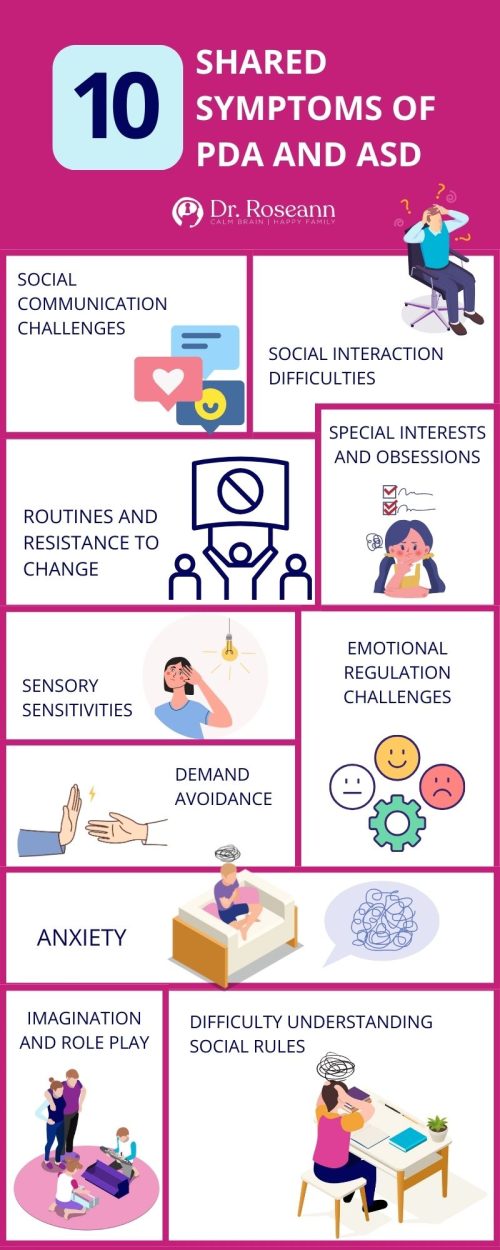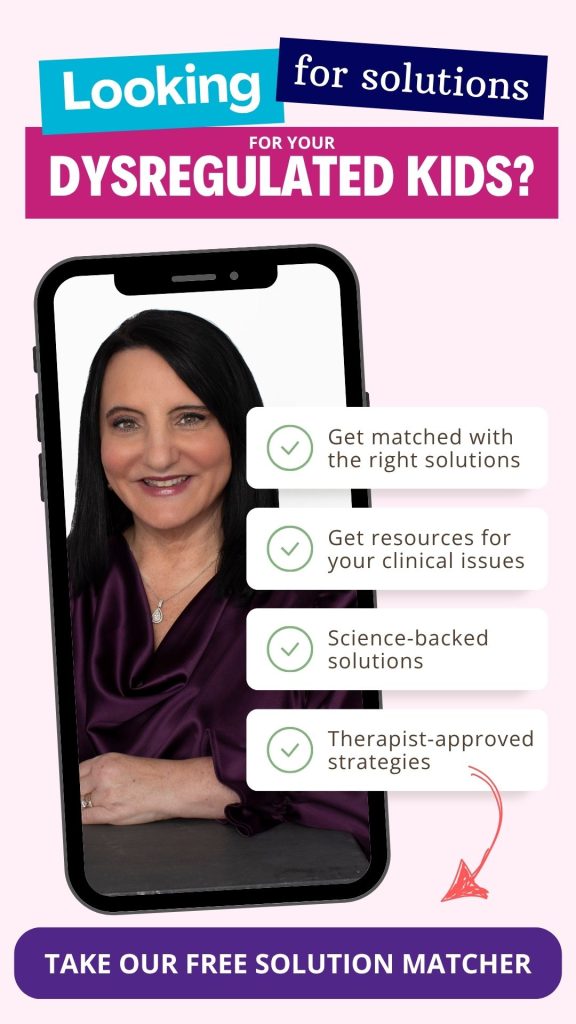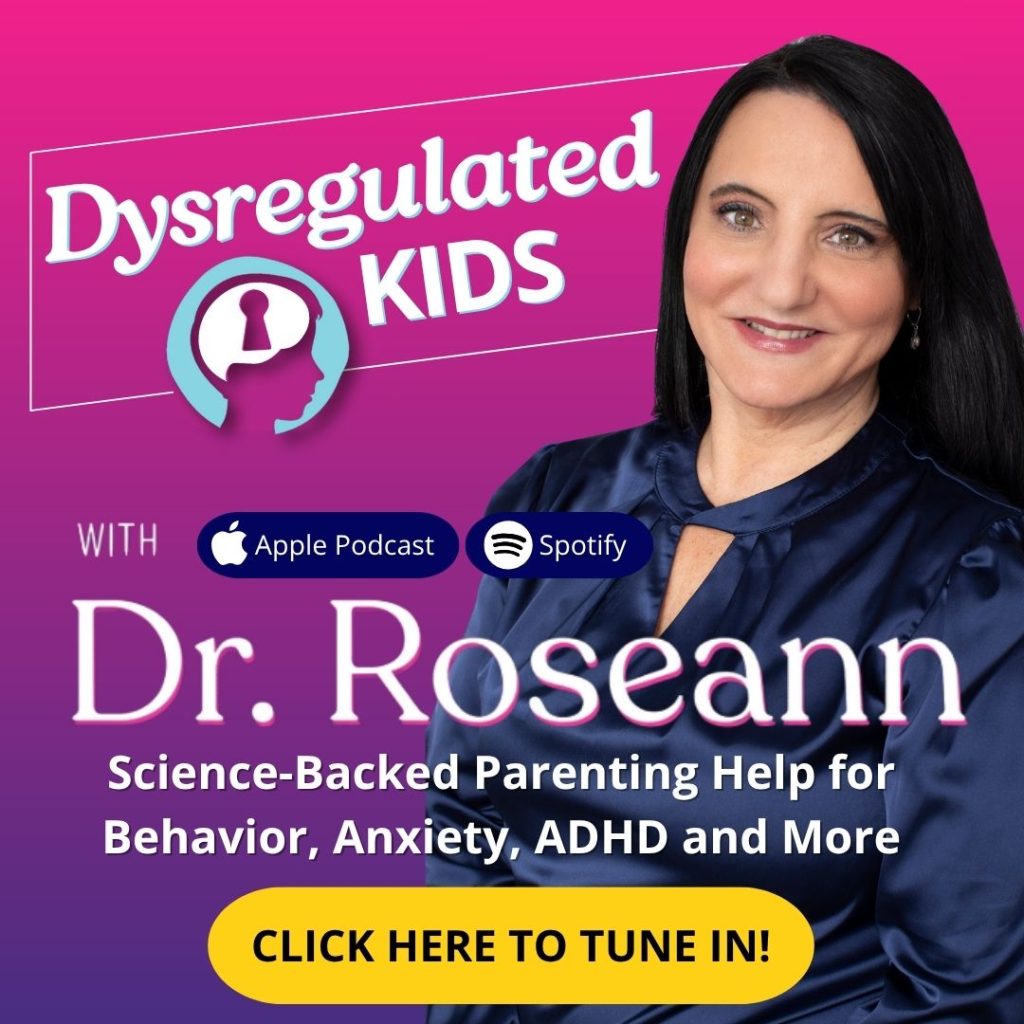Estimated reading time: 9 minutes
Does your child avoid brushing their teeth like it’s the plague? Do they negotiate endlessly about homework, or melt down at the simplest request?
Then, it might not be “stubbornness.” It could be Pathological Demand Avoidance (PDA).
If your child’s daily routines turn into battles, whether it’s bedtime, homework, or even putting on shoes, you are not alone. Parents of kids with emotional dysregulation often feel confused, exhausted, and even judged.
Sometimes what looks like defiance is actually a sign of Pathological Demand Avoidance (PDA). This is a profile within autism where children feel intense anxiety and fear when faced with everyday demands.
In this article I will help you:
- Understand what a PDA diagnosis means and why it matters
- Recognize PDA traits and symptoms in children and teens
- Learn how PDA differs from ASD and ODD
- Explore biological and environmental factors that may contribute to PDA
- Discover practical strategies to support your child at home and school
What is PDA?
PDA, or Pathological Demand Avoidance, was first described in the 1980s by psychologist Elizabeth Newson. While PDA is not yet a formal stand-alone diagnosis in the DSM-5, it is widely recognized as a profile within autism spectrum disorder (ASD).
How It Differs From Autism and ODD
- PDA vs. ASD: PDA children may show “surface sociability”—appearing socially skilled at first—but underneath is high anxiety. They also display extreme mood swings and impulsivity more often than many autistic peers.
- PDA vs. ODD: Children with Oppositional Defiant Disorder resist demands due to defiance or irritability. Children with PDA resist because of intense anxiety and a desperate need for control.
Behavior is communication. PDA behaviors are not about “being difficult”. They are a child’s way of coping with anxiety.

| Trait | PDA (Pathological Demand Avoidance) | ASD (Autism Spectrum Disorder) | ODD (Oppositional Defiant Disorder) |
|---|---|---|---|
| Trait | Extreme, anxiety-driven avoidance of everyday demands | May resist demands due to rigidity or sensory overload, but not to the same extreme | Persistent defiance of rules/authority, not anxiety-driven |
| Social Style | Surface sociability: may appear socially skilled but struggle beneath the surface | Often show genuine difficulties with social communication and reciprocity | Social skills may be intact; defiance occurs mainly in authority relationships |
| Anxiety Level | Very high anxiety, especially when facing loss of control | Anxiety common but varies widely across the spectrum | Irritability and frustration dominate, not typically high anxiety |
| Emotional Regulation | Intense mood swings, impulsivity, frequent meltdowns | Emotional dysregulation varies, often linked to sensory triggers | Angry outbursts and irritability tied to oppositional behavior |
| Core Motivation | Need for control and avoidance of perceived demands | Neurological differences in communication, flexibility, and sensory processing | Desire to resist authority and express defiance |
| Response to Parenting | Responds best to flexible, collaborative, brain-based strategies | Benefits from structured, predictable routines and supports | Often responds to consistent boundaries and behavior interventions |
What Are The Key Symptoms of PDA?
Children with PDA often experience overwhelming anxiety when asked to complete everyday tasks. Parents describe it as “walking on eggshells” around simple routines.
Core PDA symptoms include:
- Intense demand avoidance – daily tasks like brushing teeth or schoolwork spark extreme resistance.
- Social strategies – negotiation, distraction, humor, or meltdowns to avoid demands.
- Emotional volatility – rapid swings from calm to panic or anger.
- Sensory sensitivities – noise, touch, or bright lights may trigger avoidance.
- Surface sociability – appearing outgoing in some contexts while struggling beneath the surface.
Parent story: Emily, a mom of a 9-year-old, noticed her daughter would bargain and delay endlessly at bedtime. Once she learned about PDA, Emily realized these weren’t manipulative tactics. It’s an anxiety-driven need for control. Shifting her approach to offer choices eased the tension.

How Professionals Diagnose PDA
A PDA diagnosis is based on careful observation and collaboration, since there is no single test.
What Causes the PDA profile?
The exact cause of PDA is still unknown. But research suggests a combination of biological and environmental factors.
Biological Factors
- Brain differences: Subtle differences in emotional regulation and executive functioning may affect how PDA kids respond to demands.
- Sensory sensitivities: Overwhelm from sound, touch, or lights intensifies demand avoidance.
- Genetics: No single PDA gene exists, but genetic predisposition may increase risk.
Environmental Factors
- Parenting style: Authoritarian approaches often escalate struggles. Collaborative, empathetic parenting is more effective.
- Early experiences: Trauma, stress, or chaotic environments can fuel anxiety and avoidance.
- Social demands: The natural demands of friendship, school, and family life may overwhelm a PDA child.
Important: PDA is not caused by “bad parenting.” It is a complex neurodevelopmental profile requiring understanding and support.
Steps To Diagnosing PDA
- Observation – watching behavior across home, school, and social settings.
- Parent & teacher interviews – real-life context is critical.
- Questionnaires – such as the Extreme Demand Avoidance Questionnaire (EDA-Q).
- Differential diagnosis – ruling out ODD, ADHD, or anxiety disorders.
- Multidisciplinary input – psychologists, pediatricians, and therapists work together.
“PDA isn’t about willful defiance. It’s an anxiety-driven condition that needs a tailored approach.” – Dr. Judith Gould, autism researcher
Challenges Parents Face After A PDA Diagnosis
Parents often feel a mix of relief and overwhelm. A diagnosis validates what they’ve seen. But it also raises tough questions about daily life.
Common struggles include:
- Being misunderstood by teachers or extended family
- Exhaustion from constant negotiation
- Worry about the child’s independence and social future
- Difficulty accessing professionals familiar with PDA
Parent story: Mike and Sara, whose 12-year-old has PDA, described years of being judged as “too lenient.” Once the diagnosis was explained, they reframed their son’s avoidance as anxiety—not defiance—and felt empowered to parent differently.
Parenting Strategies That Actually Help
Traditional behavior charts or strict routines usually make PDA worse. Instead, parents need brain-based and flexible approaches.
Effective strategies include:
- Offer choices instead of commands (“Shall we start homework before or after snack?”)
- Indirect requests – use curiosity instead of direct orders.
- Role play & pretend – playful scenarios reduce resistance.
- Positive reinforcement – celebrate effort, not just results.
- Sensory tools – weighted blankets, noise-canceling headphones, or fidgets help regulate.
- Connection before correction – calming the brain first leads to cooperation.
Let’s calm the brain first. A regulated brain can cooperate, learn, and thrive.
How Can Schools Support PDA Children?
Schools often mistake PDA for misbehavior. Proper support can transform a child’s experience.
School strategies include:
- Flexible deadlines and formats for assignments
- Building trusting teacher-student relationships
- Sensory-friendly classrooms and quiet spaces
- Allowing autonomy and movement breaks
A PDA diagnosis can feel like a turning point. Instead of blaming yourself, or your child, you gain a new lens: “This is anxiety-driven, not defiance.”
Parenting a PDA child is hard, but you don’t have to walk the path alone. With brain-based strategies, professional support, and a community of other parents, you and your child can thrive.
FAQs about PDA Diagnosis
Is PDA an official diagnosis?
Not yet. PDA is recognized as a profile within autism, though it lacks a DSM-5 listing.
Can PDA co-exist with ADHD or anxiety?
Yes. PDA often overlaps with ADHD, autism, and anxiety disorders.
Can adults have PDA?
Absolutely. Many adults only recognize PDA when exploring their child’s struggles.
Is PDA caused by parenting?
No. PDA is a neurodevelopmental profile, not a parenting issue. Supportive parenting helps, but it does not cause or cure PDA.
Terminology
- PDA (Pathological Demand Avoidance): Autism profile defined by extreme demand avoidance.
- Surface sociability: Ability to appear socially skilled while struggling beneath the surface.
- Differential diagnosis: Process of ruling out similar conditions.
- Sensory processing: The brain’s way of interpreting sensory input.
Citations
O’Nions, E., Happé, F., Viding, E., & Noens, I. (2021). Extreme demand avoidance in children with autism spectrum disorder: Refinement of a caregiver-report measure. Advances in Neurodevelopmental Disorders, 5(3), 269–281.
https://doi.org/10.1007/s41252-021-00203-z
Truman, C., Crane, L., Howlin, P., & Pellicano, E. (2021). The educational experiences of autistic children with and without extreme demand avoidance behaviours. International Journal of Inclusive Education.
https://doi.org/10.1080/13603116.2021.1916108
White, R., Livingston, L. A., Taylor, E. C., Close, S. A. D., Shah, P., & Callan, M. J. (2023). Understanding the contributions of trait autism and anxiety to extreme demand avoidance in the adult general population. Journal of Autism and Developmental Disorders, 53, 2680–2688.
https://doi.org/10.1007/s10803-022-05469-3
Always remember… “Calm Brain, Happy Family™”
Disclaimer: This article is not intended to give health advice and it is recommended to consult with a physician before beginning any new wellness regime. The effectiveness of diagnosis and treatment vary by patient and condition. Dr. Roseann Capanna-Hodge, LLC does not guarantee certain results.
Are you looking for SOLUTIONS for your struggling child or teen?
Dr. Roseann and her team are all about science-backed solutions, so you are in the right place!
©Roseann Capanna-Hodge









